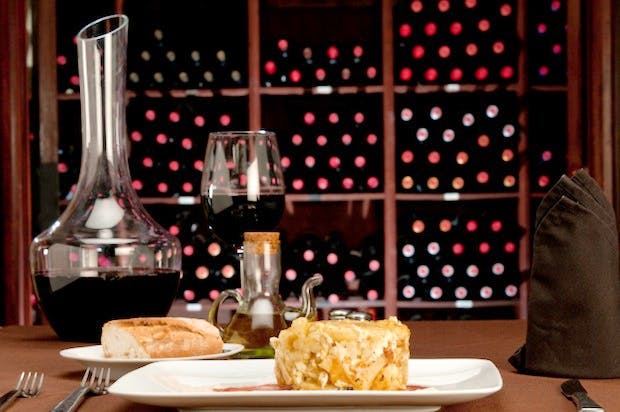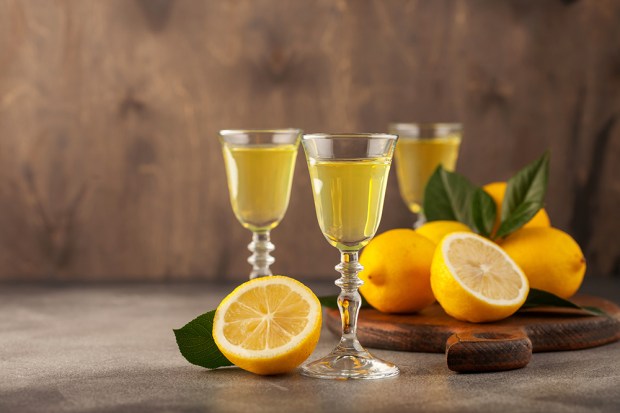Chefs have a problem. Think of much of the best food you have ever eaten. Caviar, English native oysters, sashimi, foie gras, truffles, jamon iberico, grouse, golden plover, properly hung Scotch beef; Stilton, the great soft cheeses: all have one point in common. They require minimal intervention from the kitchen. With the assistance of one female sous-chef, even I could roast a grouse. The chef would come into his own over pudding, and indeed with Welsh rarebit, but one can understand why this does not provide enough outlet for creativity.
There are always the great French bourgeois dishes, which few of us eat often enough. Navarin of lamb, blanquette de veau, suprêmes de volaille, daube de boeuf: all splendid. But they are not a new challenge to a cook.
Artists have a similar difficulty. For centuries, there was an iconographic tradition and a canon: a continuity from Cimabue to Cézanne. Then, after Cézanne and the early Picasso — what was left to do? Hence the frequent subsequent descent into pseudery. ‘Demoiselles d’Avignon’ and even worse, ‘Guernica’: absurd, feeble-minded pretentiouness wholly deserving of Alfred Munnings’s castigation.
Frivolity is not restricted to the arts. Among chefs, Tom Aikens is often guilty of it and Heston Blumenthal is not always innocent. Architects too have a difficulty. A chap wants a country house, and is unimpressed by most contemporary building. Forget architects: he only needs a style book plus a master mason, and there it is. Eight bays, a portico, all easy on the eye: the roof will not leak, and it will still be a pleasure to look at and live in two centuries hence. I suspect that even James Stirling or Richard Rogers could produce a decent house if they were not besotted by the need to appear original. Modern architecture is not always an oxymoron, but it does need genius to bring it off — not credulous acolytes of Le Corbusier, one of the most evil figures of the 20th century who was not directly involved in mass murder. In Britain, council estates designed by vulgar Corbusians were a major contributor to mass misery.
Returning to the relative innocence of the kitchen, the Hispania restaurant, previously acclaimed in this column, knows how to make serious ingredients sing. But it is even more ambitious. It has organised visits by talented young Spanish chefs, who intend to harness tradition and creativity. The other night, it was Quique Dacosta’s turn. Young and fearless, Señor Dacosta has already won three rosettes for his restaurant in Alicante. But there is a restlessness which reminded me of early-period Gordon Ramsay and Marco Pierre White. Like them, he is on a journey. He is happy to please and to win accolades, but he is a driven man, with himself as the driver. His course is set by his own genius.
‘Genius’ may not be an overstatement. He treated us to 16 courses. They did not all hit the highest notes; some were merely playful. But his oreo of coffee, cocoa and cheese, his coca de dacsa, his kefir and his ash rice stayed on the palate. So did a black truffle dish, though one ought to be fair. The truffle was entitled to an equal share of top billing. This is a remarkable fellow, and I do not think that success will spoil him. He wants to take cookery to new heights.
Food needs drink. We started with sherry, a fino una palma from Gonzalez Byass. I have praised it before, but it was worthy of a revisit. It has that fino teeth-on-edge flintiness, plus subtlety and length. To follow, there was as good an Albarino as I have tasted, a Castro Martin 2012. It is never a great wine, but goes jolly well with Spanish sea-dishes. A Ribera del Duero, Finca Villacreces 2006 was another fine example of the genre, as was an Oloroso, Apostoles, also from Gonzalez Byass. The whole meal was a harmony of inheritance and innovation: modern Spain at its best.
Got something to add? Join the discussion and comment below.
Get 10 issues for just $10
Subscribe to The Spectator Australia today for the next 10 magazine issues, plus full online access, for just $10.















Comments
Don't miss out
Join the conversation with other Spectator Australia readers. Subscribe to leave a comment.
SUBSCRIBEAlready a subscriber? Log in